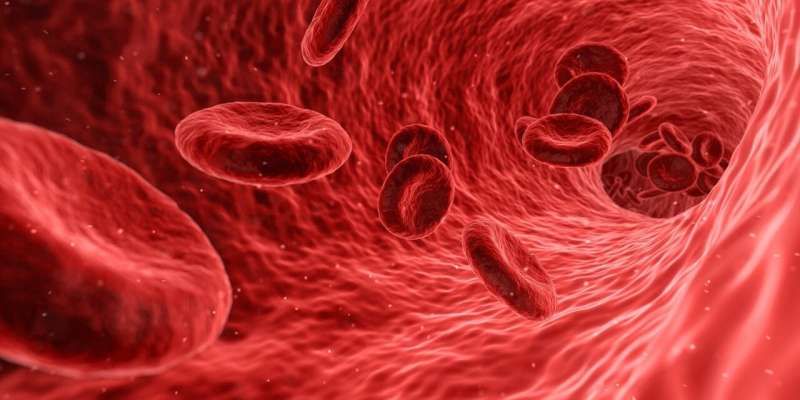World's first ultrasound biosensor created in Australia

The ability to accurately monitor drug levels and biological molecules inside patients in real time has remained largely elusive.
Most of the implantable monitors invented so far rely on high tech and expensive detectors such as CT scans or MRI. Using ultrasound—which is cheap and portable—as a means to track a disease state as in response of a tumour to a new drug or the risk of a heart attack with the rise of a diagnostic protein called troponin has always been more a Blue Sky than reality.
Now Melbourne, Australia researchers have developed the first biosensor that can be used in vivo, inside a body, able to emit signals that can be detected by common ultrasound scanners.
The technology—published today in the journal ACS Sensors— has been granted an international provisional patent. The team led by Dr. Simon Corrie and Dr. Kristian Kempe, from the ARC Centre of Excellence in Bio-Nano Science and Monash University in Australia, has developed a nanoparticle that alters its stiffness in response to pH changes in the body, with these changes picked up by ultrasound.
To date ultrasound imaging uses what is a called a contrast using gas-filled microbubbles. However according to Dr. Corrie these last only 10-20 minutes making long term tracking within a body impossible.
The new technology which was developed with colleagues at Monash University and the Baker Heart and Diabetes Institute, can be inserted deep into the tissues and measure biomarkers such as, pH (as a measure of whether a tumour is shrinking following chemotherapy) and in the near future more complex markers such as oxygen (as an indicator of stroke injury) or disease-related proteins.
According to Dr. Corrie the advantage of the technology is that, eventually, it will be able to be "read" by "something as simple as a mobile phone which can currently record ultrasound, making it able to monitor patients in remote areas, without the need for big hospital labs," he said.
The technology has been tested in an animal model to detect changes in pH levels. It will now be tested in an animal models of disease to determine whether it can accurately monitor rapidly changing pH levels, initially focussing on cancer and stroke. The goal, according to Dr. Corrie, is to give clinicians the power of being able to have a patient sit in a chair and, as they are infusing the drugs, using commonly available ultrasound to monitor drug levels or organ response in real-time, adjusting dosages as a function of the patient's needs.
More information: Julia Ann-Therease Walker et al, Dynamic solid-state ultrasound contrast agent for monitoring pH fluctuations in vivo., ACS Sensors (2020). DOI: 10.1021/acssensors.0c00245
Journal information: ACS Sensors
Provided by Monash University



















